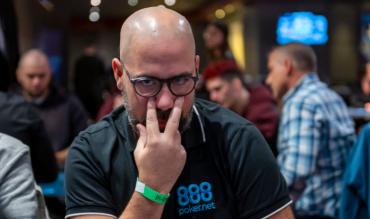Poker is all about telling a story. Good bluffers tell convincing tales - unlike that sleazy salesperson who promises you the moon or that fair-weather friend who can’t get back to you because they “never check their phone” and “just aren’t big on texting.”
None of that nonsense. Good bluffers are good bluffers because they’re believable. In the case of the salesperson analogy, you would be willing to buy what they’re selling.
- And that all starts with the story.
- What makes a good poker story?
- The underlying theme of any poker story is table image.
- Table image is how other players see you.
Do they think you are a maniac player pulling fast ones—a real-life Bluffer-ella?
Or do they think you are a sweet little fawn who only bets when you have it?
People won’t solely judge the believability of your bluff. They’ll judge YOUR believability.
How Your Table Image Affects Your Bluffs
Your bluff may be perfect on paper. But if you’ve got a wild and crazy table image, it likely won’t be effective. This reasoning counts for online also.
If you’ve been involved in lots of pots, showing lots of bluffs, or even wacky/marginal holdings, people will give you less credit. The guy who only plays one hand per hour is much more likely to get any bet through, regardless of the cards or board texture.
- So don’t just ask yourself, “Is this a believable story?”
- Ask yourself, “Is this believable coming from me?”
Remember, when it comes to table image, it takes two to tango—pay attention to who you’re bluffing. Some people are just more bluffable than others.
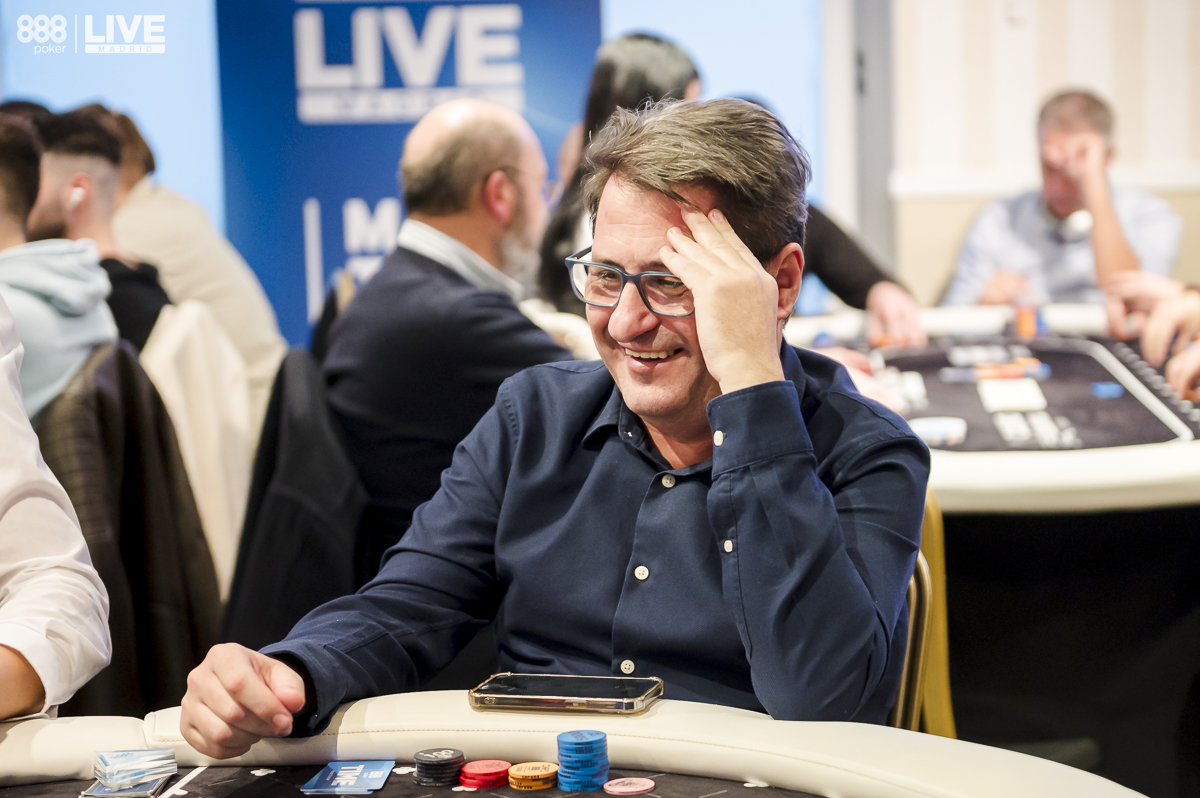
The more money someone has, the more they can afford to call for kicks and giggles. Age is also often a factor.
The younger someone is, the more motivated they are to be a hero. Some people’s entire reason at a poker table is to make macho hero calls. That’s what they’re there for–that’s why they play poker in the first place!
And as illogical as it may sound, some would rather never be bluffed than be bluffed one out of 100 times.
These people will always call, even if they lose 99% of the time. It’s more painful for them to risk being bluffed than it is to lose the cash.
To recap thus far:
- You need a good poker story.
- The story needs to be believable coming from you.
- Your opponent needs to be bluffable.
If any of these three fall apart, the bluff won’t work.
Good Bluffs Turn Up the Pressure Cooker
Good bluffs apply incredible pressure—they’ve got to put your opponent in a tough spot. The most elegantly-sized bets and artful adherence to board go out the window if it’s too cheap to call. Poker is a game.
People play for fun—again, one of the most exciting things to do is catch someone with their pants down.
Don’t believe everything you see on TV. Poker pros bluff way more because there is more money on the line—a $200,000 pot is very different from a $200 pot.
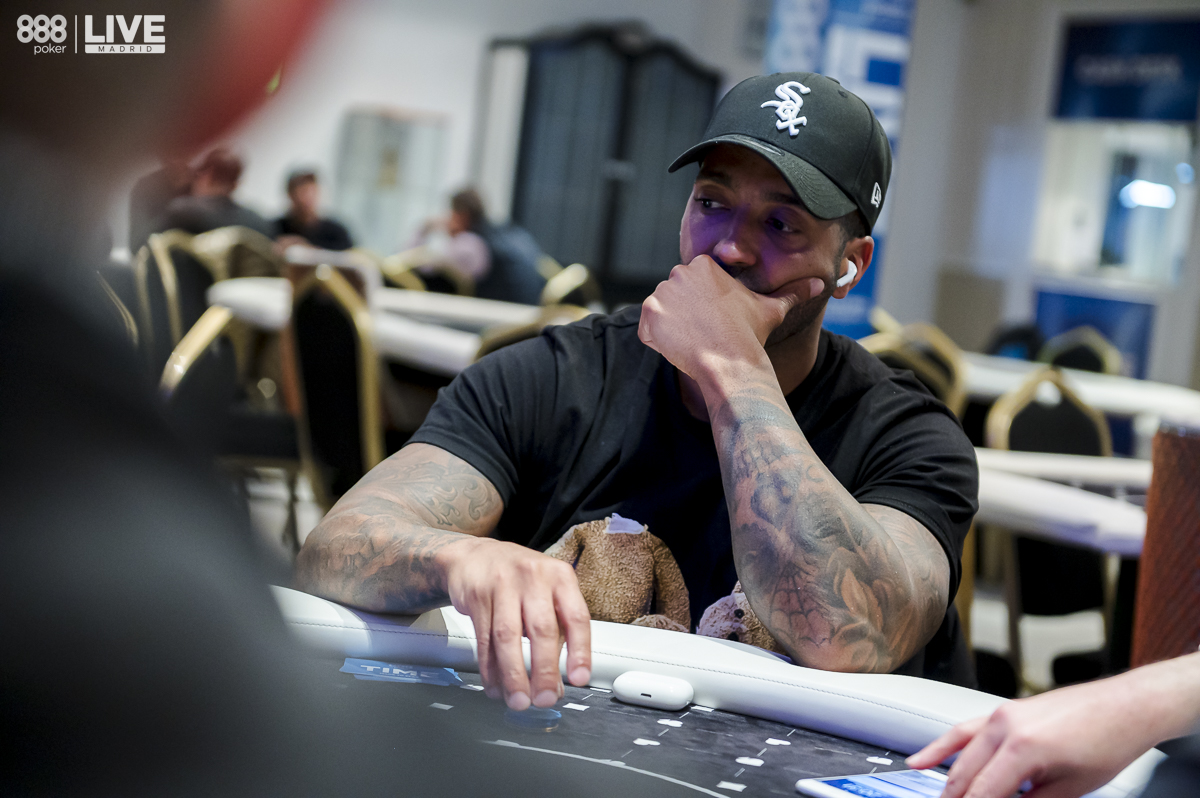
Low-stakes games make it very challenging to bluff because there is little you can do to make someone truly squirm. They’ll call if they think they’re right most of the time (more or less). Or just enough of the time.
When making calls for thousands, hundreds of thousands, and even millions of dollars, you will want to be right much more often than 50/50.
But for ten bucks, a lot of people will gladly take 50-50 odds.
Poker pros will lay down huge hands on the flop or turn when the pressure is too high:
Art Papazyan astonishingly folded bottom set to a single turn bet, not wanting to risk $60,000.
During a televised tournament, Maria Ho famously tossed away a set of tens on the flop.
When interviewed, she said she figured she was a roughly 65% favourite on the all-hearts board (true). But that was too small a percentage for her taste when a big tournament title was on the line.
In both these cases, their opponents were, in fact, bluffing. But it takes extreme circumstances to get someone to fold a set!
Pressure is higher in tournaments than in cash games because once you’re eliminated, you’re done. You can’t just reach into your pocket and buy more chips (assuming it’s after any rebuy period). So, there is more incentive to be right—and thus more incentive to bluff.
Someone could probably profitably play cash games their entire life and never bluff, only betting with the best hand.
Tournaments are different.
You can’t wait forever on pocket kings or aces. If you want to be a winning tournament player, you’ve got to be able to throw in a few bluffs!
Bluff-Catching the Right Way
One-pair hands are classic “bluff-catchers”. They can’t beat any strong value hands, but they can beat a bluff. Calling someone’s bet with ace-high or king-high or queen-high or (gasp!) jack-high is calling down with nothing—but saying my nothing beats your nothing. (There’s less substance there than a teenage breakup!)
If the run-out was 7♦8♦4♦3♣9♥ and I called a river-bet with J♣9♠, I don’t beat any value hands—two pair, straight, set, flush—just bluffs.
Players with a feel for the game would never bet a hand like A♦8♣ on the river hoping to get called. They’re only getting called by hands that beat them.
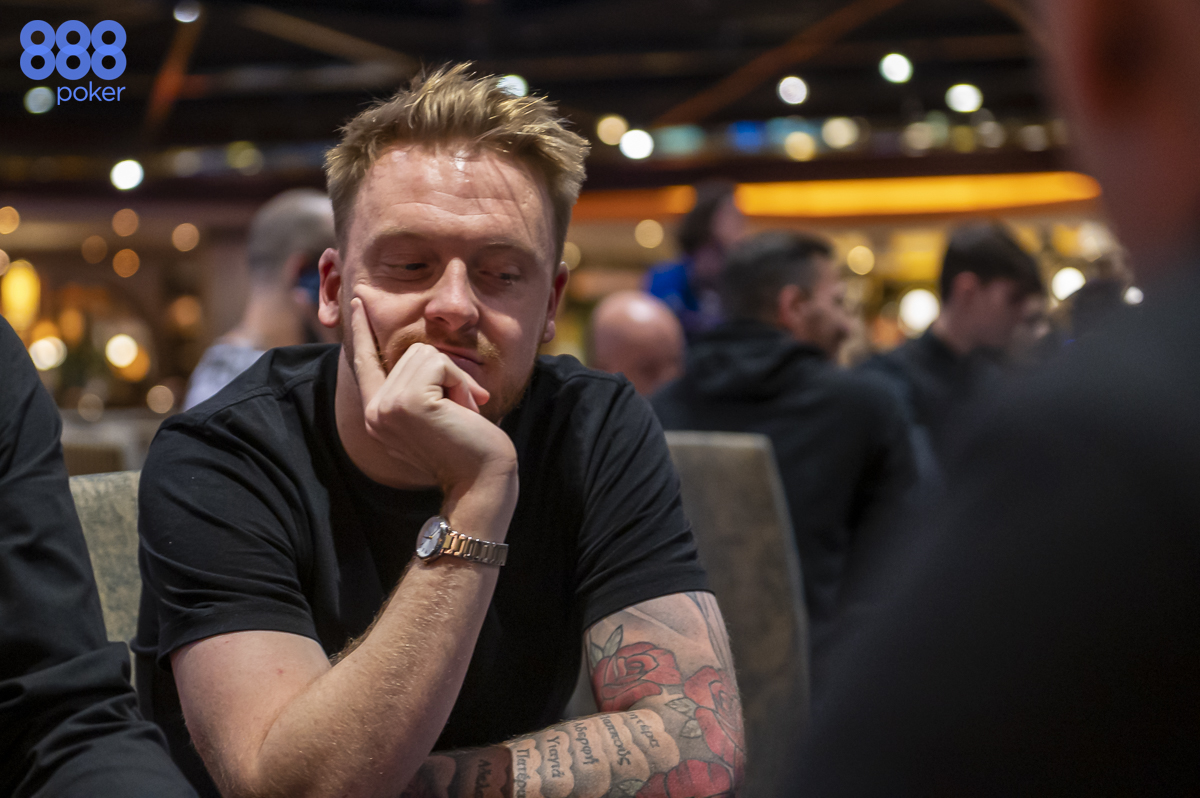
That’s why it’s especially crucial not to get married to big pocket pairs like aces, kings, or queens. Although they are usually the best hand, it’s uncommon for someone to bet sizeably and aggressively with anything less than one pair.
- By the river, one-pair hands are virtually bluff-catchers.
- What constitutes a bluff-catcher will vary by board.
- Sometimes all you need is a single pair or high card.
Other times even a hand as strong as two pair or a set is a bluff-catcher. (I.E. K♥Q♥ is a bluff-catcher on a A♠K♠Q♦3♠9♥ board)
Bluffing is tricky for beginners because you need to know relative hand strength—which cards are good at which times. Sometimes a pair of aces is strong. Sometimes it’s weak.
This concept is hard for newer players to grasp; they are never folding a pair of aces!
Bluff-Catching with Ace-High
Here’s an example of a hand history from real life. Our tournament table had just started, and we were short-handed (only five players).
Short-handed play is more aggressive, so I raised A♦7♠ under the gun.
The guy on the button called, and so did the man in the small blind.
Flop: K♣Q♠2♦.
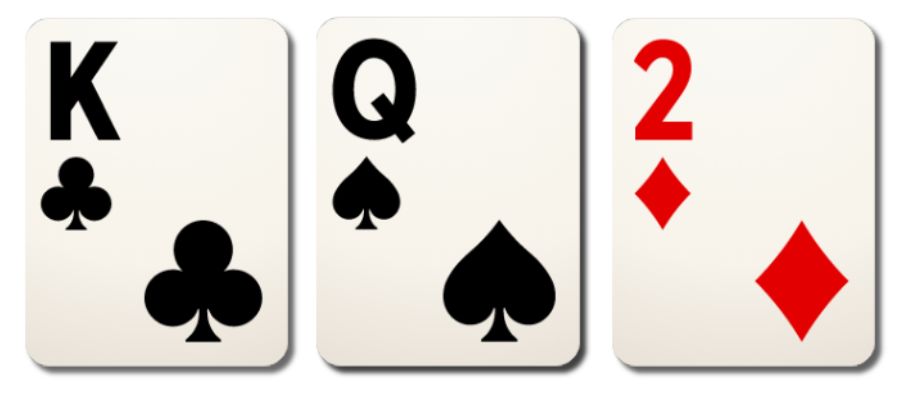
This flop is about as bad as it gets—which is why it’s terrible to raise a hand like A♦7♠! It’s possible my opponents hit the king or queen or maybe even a deuce.
And let’s say I was ahead, and they were holding a hand like J♥10♦. They’ll call my flop bet with their straight draw and could easily bluff me on the river.
Bad hand. Bad situation. (There isn’t any flop you want to see with ace-seven that doesn’t involve two sevens).
The gentleman in the small blind checked to me. I decided to give up and check. The guy on the button checked as well.
Turn: 8♠
Small blind checked, I checked, and button bet.
The man in the small blind folded—had he called, I would’ve run away faster than Taylor Lautner’s acting career.
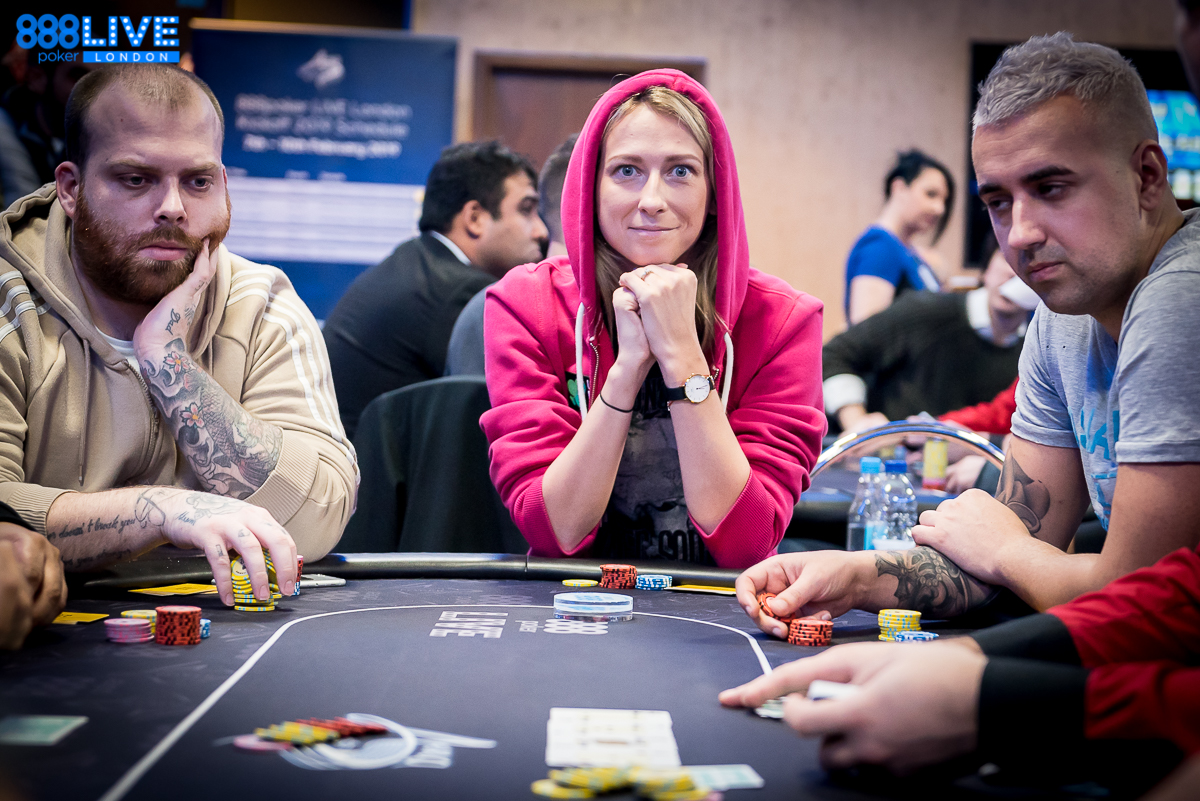
An eight is a peculiar card to bet—why would he bet with an eight? The small blind or I—especially the small blind—could easily have at least a queen.
On a coordinated board with many likely pairs and straight draws, it wouldn’t have made sense for the guy on the button to check back a king.
He was repping a queen or nothing. Unless he turned a set of eights, that would make sense.
Still, his sizing seemed peculiar for a set of eights. My general read was that ace-high could’ve been good. I made the call.
River: 5♦

I checked, and he bet again. The five is a weird card to bet—what’s he trying to rep? He should never bet an eight or five for value. And I didn’t think there was any reason to check back a king or even a queen on the flop.
The whole thing seemed fishy to me: if my ace-high was good on the turn, it was good on the river—the five didn’t improve any hands already beating me.
I made the call; he said, “Good call,” and went to muck. But I had to see his hand.
He said, “You’re good,” and finally showed A♠3♣. My ace-high had him out-kicked.
Takeaways:
A) This example is bluff-catching in its purest form. My hand only beats a bluff; I can’t win against any hand he’s trying to get to call.
B) Good bluffers tell good stories. His story didn’t add up—I didn’t think he’d check back a king or queen on the flop, and he shouldn’t be betting a low pair like an eight for value.
Those hands would usually check the river and pray for a miracle they win (Say, he had rivered a pair of threes. He probably would’ve checked back with his showdown value in case I had a hand like ace-jack or ace-ten on a gutshot straight draw).
Change of Plans
The best poker players are good at making plans. (Easy example: you flop a flush draw —what will you do if you don’t hit your flush on the turn? Think ahead.)
They also can adjust to plans. Sometimes you concoct a brilliant strategy on the flop to bluff, barrel, or trap, and then the next card ruins everything.
Say, you were going to sucker your opponent in and check-raise the turn when you have 7♦3♣ and the flop is A♥7♠3♦. But the turn is the dreaded A♣.
Whoops—back to the drawing board. Time for a new plan (most likely give up).
Your ability to think two steps cards ahead and make quick pivots will determine how good you can get.
Here is an example of a thwarted plan:
We were playing a local daily tournament and were down to the final five players. I raised K♥J♣, and a young kid defended his big blind. The flop was 9♦7♦2♥. He check-called my bet, planning on shoving any turn (spoiler alert: he has an open-ended straight draw with 8♣6♣).
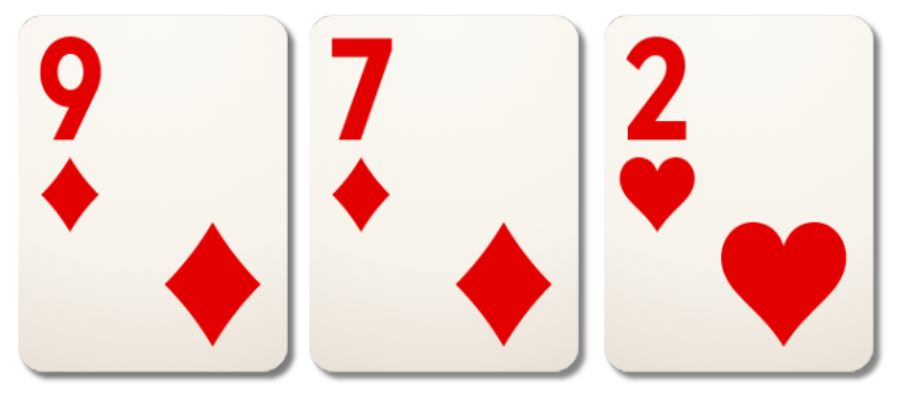
The problem was the turn card rolled off as a deuce.
His story no longer makes sense; he can’t reasonably represent anything.
The plan was fine on the flop. Bluff-shove any turn. Good. OK. That works.
But when a bad turn came, he couldn’t switch gears. He needed a change of plans.
(And yes, I called his jam with king-high).
The most common scenario is when someone has a big pocket pair like A♥A♣ or K♣K♠. Since they know they have their opponent beat preflop, the plan is usually bet, bet, bet flop, turn, and river.
But what if the runout is 5♠6♠7♥8♠10♦?
Almost always, pocket aces or kings are beat here. Abort mission!
When you’re thinking about what’s next in poker on each card, ask yourself this:
Did the board change?
Meaning, is the hand that was winning on the flop still winning? Or is it more likely the other player’s hand improved—giving them the lead?
Try It Yourself!
Flop is ???
Turn card is ?
Did the turn card change anything?
A) Yes
B) No
The answer is A) Yes! That turn card changed everything—the obvious flush draw came in, as did the open-ended straight draw (KQ now has a straight).
So, if your K♦K ♣ was winning on the flop, it’s probably not on the turn.

Bluffing for Beginners Conclusion
Bluffing is not only a science but an art. Yes, the technical cards and probabilities matter. But so much comes down to people skills and mental agility (including when you are playing online).
- What motivates this person to play poker?
- Are they playing solidly, trying their best to make good decisions?
- Or are they simply there to have fun?
You need to get inside their head a little - not to mention your capacity to make decisions on the fly. Poker requires changes of plans.
What makes a good poker player? A good pivot.
The best bluffers in the world know when to shut it down and can spot when others should be doing the same but aren’t.
It takes a bluffer to know a bluffer!
